Ben Witherington [1]Ben Witherington is Amos Professor of New Testament for Doctoral Studies at Asbury Theological Seminary and on the doctoral faculty at St. Andrews University in Scotland, see “About Ben … Continue reading has a new blog post titled “Once More with Feeling: Did the James Ossuary come out of the Talpiot Tomb?” in response to Sunday’s NYTimes story on the recently concluded chemical tests carried out on the controversial “James son of Joseph, brother of Jesus” ossuary and several dozen other randomly selected 1st century Jerusalem ossuaries, including those in the Talpiot “Jesus son of Joseph” tomb. He gets a lot of things confused and some things just wrong about these latest tests, but I appreciate his response. Ben is a friend, he even grew up in Charlotte, but we have had our strong disagreements over theology, from the virgin birth of Jesus to his burial and resurrection. Given his strong stance as a leading Evangelical Christian scholar such is no surprise. For Ben there can be no tomb holding the bones of Jesus–much less his family–since he was taken bodily (bones and all) to heaven 40 days after the resurrection of his physical body–leaving behind his empty tomb.
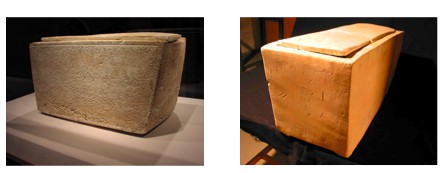
We do agree on one thing–the authenticity of the inscription of the James ossuary and its very likely connection, not just to “any Jesus” of the 1st century, but to Jesus of Nazareth, see my post here. In fact, with co-author Hershel Shanks, editor of Biblical Archaeology Review, Ben “wrote the book” on the James ossuary, namely The Brother of Jesus: The Dramatic Story & Meaning of the First Archaeological Link to Jesus & His Family back in 2003, shortly after the public debut of the ossuary. It remains, in my view, the “gold standard” among the many subsequent books that have come out.
Now to Ben’s latest blog post. I will take up some of his main points one-by-one, in no particular order, with a bit more of the back-story.
Witherington begins by questioning whether Dr. Aryeh Shimron, whose expertise is in ancient “plaster,” is qualified to do the kinds of chemical and soil analysis these tests involve. Dr. Shimron’s broad qualifications and distinguished career in the field of geo-archaeology is well known in his field so there is no need for further comment. [2]Dr. Shimron is retired and though involved in various projects he also gives specialized tours related to his work in Geo-Archaeology. See here for some of his background and here for some of his … Continue reading He then laments that Ammon Rosenfeld, who worked with Shimron for the Geological Survey of Israel is no longer with us, since he would be able to comment on Shimron’s latest work. Dr. Rosenfeld, whom I knew well, died tragically in a car accident last July. What Witherington apparently does not know or recall is that Rosenfeld firmly believed that the James ossuary came from the Talpiot tomb simply based on patina tests. He was the lead author of a paper “The Connection of the James Ossuary to the Talpiot Tomb,” available on-line here.
I was of course not surprised at his ad hominem attack on Simcha Jacobovici, who, by the way produced the initial 2003 documentary “James, Brother of Jesus” for Discovery, that I think Ben and I both would rate as outstanding. But attacking Simcha and his motives has become fairly standard operating procedure. [3]In fact neither Simcha nor Dr. Shimron had anything to do with whether or when the NYTimes story would run–Easter or otherwise. Contrary to the implication in Witherington’s post, Simcha … Continue reading
The Earthquake and East Talpiot. Dr. Shimron first got his idea for these chemical ossuary tests in 2008 at the Princeton sponsored “Jerusalem Symposium on the Talpiot Jesus tomb” organized by James Charlesworth. The papers from this conference are now published in a marvelous 585 page volume, James H. Charlesworth, ed., The Tomb of Jesus and His Family? (Eerdmans, 2013), that explores the Talpiot “Jesus” tomb and related issues from all viewpoints.
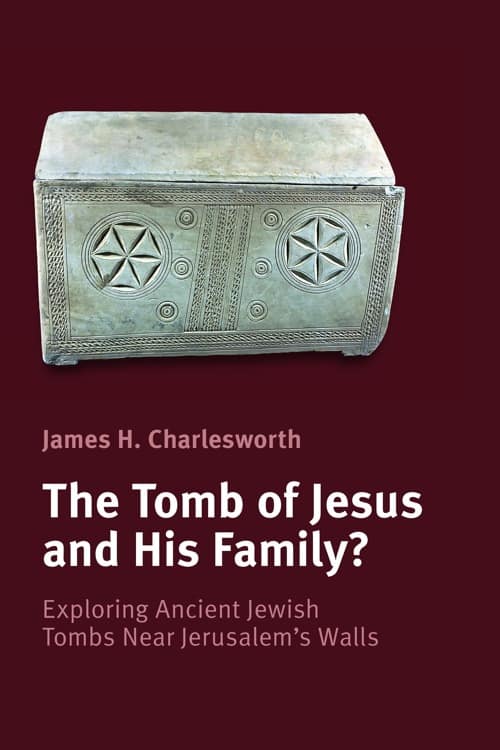
I happened to be sitting next to Shimron as Shimon Gibson was presenting his paper, pointing out that the blocking stone of the Talpiot tomb had apparently been missing long before 1980 when the tomb was discovered by the building blast–so the tomb was left open for an extended time and had filled up with soil–covering even the tops of the ossuaries in the inner tomb. Shimron immediately had the idea that deeply scraped samples, below the surface patina, from the bottom and inside of the Talpiot tomb ossuaries, would provide a chemical signature based on the soil absorbed by the porous limestone over the centuries, that could then be used for comparison with other ossuaries–including that of James–to possibly determine provenance. It was a hypothesis at this stage, but one that could be tested.
Shimron thought that the patina comparisons of the James ossuary and those in the Talpiot tomb were important but not wholly definitive–even though they had already pointed in the direction of a connection between the James and Jesus ossuaries. These tests were done by Pellegrino in 2007 (published in the Charlesworth volume) and supplemented with further testing and analysis in 2014 by the late Amnon Rosenfeld (with Krumbein, Pelligrino, Feldman) in an article titled “The Connection of the James Ossuary to the Talpiot Tomb,” that I cited above.
Shimron was particularly intrigued the the question of how and when the Talpiot tomb had had its blocking stone dislodged, and filled with soil. I suggested that he take a look at British and PEF aerial photographs of the East Talpiot area when it was bare without any buildings and see if he could learn anything. He followed up on that and discovered clear evidence of tectonic slides specifically at the Armon Hanatziv ridge, where the Jesus tomb is located. He presented his thesis at the Bar Ilan University conference “New Studies on Jerusalem,” arguing that the phenomenon was related to the 363 C.E. earthquake that devastated Jerusalem and the wider region. His presentation was well received and the resulting paper, co-written with Moshe Shirav, “The Armon Hanatziv Tectonic Slide and Some Archaeological Implications,” is now published and is available for download here. I find it quite persuasive and I know Ben will want to carefully read it.
The Talpiot Tomb Soil Fill in East Talpiot. Ben is mistaken about the soil of East Talpiot being the same as soil through the Jerusalem area. He wrote me an e-mail immediately this past Sunday morning after reading the NYTimes piece:
There is no such thing as a chemical fingerprint as is suggested in the report. There might well be many ossuaries from many places around Jerusalem that ended up in caves which would test out with a similar chemical residue. Why? Because the type of seepage and residue is the same in multiple places in Jerusalem. It’s not specific to the Talpiot tomb! Jerusalem limestone is Jerusalem limestone, and the ground seepage is bound to be similar in numerous places.
Frankly I found these dogmatic assertions rather amazing. One has to wonder, how Prof. Witherington, a New Testament scholar, would know such things, and would assert his views over those of Dr. Shimron, who has done field-work on this for the past seven years and has professional qualifications.
What Shimron determined is that the soil that had filled the Talpiot “Jesus” tomb was a one-time event in the past. It was not built up over the years with silt and water laid layers of soil, bit by bit. He could determine that from the ossuaries as well as the walls of the tomb itself. The result is that “time stopped,” because of this soil burial. Two things resulted: 1. The buried ossuaries absorbed trace amounts of the chemistry of the soil and muck; 2. Only one kind of material could enter the ossuaries and that was the material in which the ossuaries were buried. These two left items left their unique chemical signature on the Talpiot and James ossuaries.
When it comes to the issue that all soil in Jerusalem is the same, the fact is that Witherington is just plain wrong. East Talpiot is different than the other regions of Jerusalem. Rendzina soil is characteristic of east Jerusalem, not the rest of Jerusalem, but it is the way in which deeply penetrated the limestone ossuaries that allowed Shimron to test for any possible chemical signature. For example, one of the ossuaries scraped was taken from Talpiot Tomb B--just 60 meters from the Jesus tomb. It is the only one Amos Kloner took out in 1981 and it is in the Israel Antiquities Authority collection [4]For a photo and further information on this ossuary see, Tabor and Jacobovici, The Jesus Discovery (Simon & Schuster, 2011), pp. 17-21. We now have an eyewitness account of its removal, … Continue reading Even given the same kind of soil on the same ancient estate–as determined by Joseph Gat the original excavator–Shimron found no characteristic chemical pattern that would link it with the Jesus tomb ossuaries nearby.
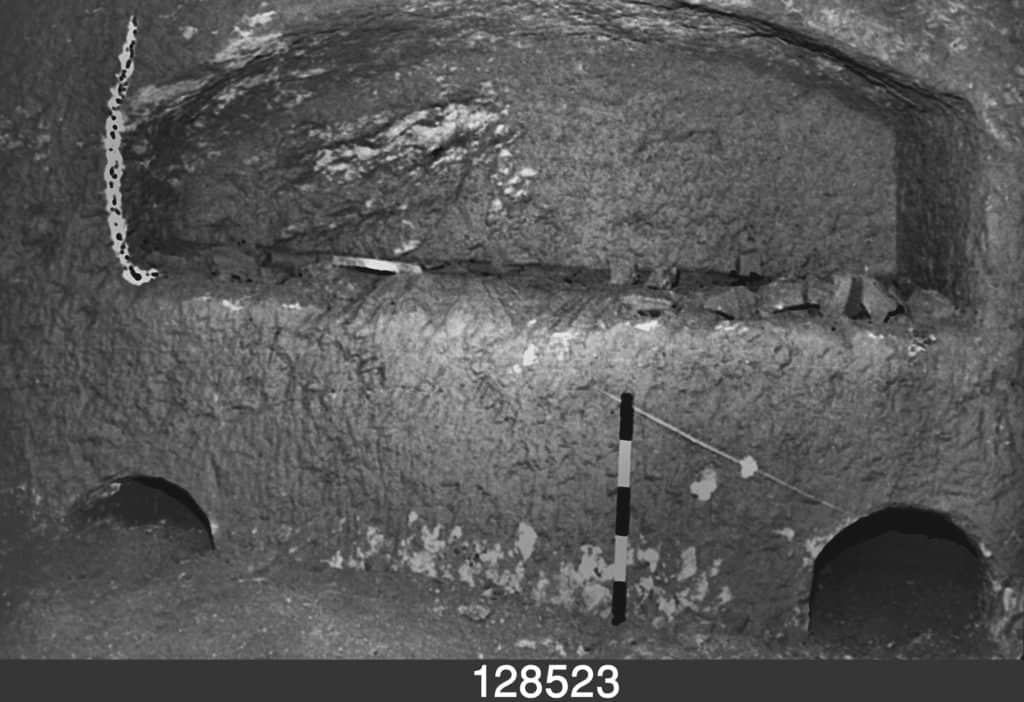
Shimon Gibson is surely right that there are other soil filled tombs in the Jerusalem area. I know of two myself, in the Hinnom Valley, just adjacent to our “Tomb of the Shroud,” discovered in 2000. [5] See the scientific report here and implications here Ossuaries from this area were in fact sampled, including from the Shroud Tomb, and there is no chemical match. Also these tombs were filled by silt and build-up over time, not in one major event. Also the soil is distinctively different.
Shimon Gibson is my colleague here at the University of North Carolina at Charlotte, I have excavated with him for 15 years (Suba and Mt Zion), and I consider him to be among the most knowledgeable people on the planet when it comes to the history and archaeology of Jerusalem. In addition, he was present at the original Jesus tomb excavation in 1980 and produced the official map of the tomb. Shimon and I disagree on Talpiot and the Jesus family tomb identification rather sharply, but our interchanges are professional and respectful. He does not accuse me of “leaping” to my conclusions based on flimsy evidence nor do I think him “dense” for not sharing my views. He openly recommends my publications and papers and encourages a wide debate and discussion. Shimon is an honest and open minded person and he does change his views, often, based on new evidence. I feel the same about Chris Rollston and Mark Goodacre, who also disagree with me and me with them, but our ASOR sponsored forum a few years ago was to me a model of proper academic exchange–see the papers, pro and con, archived at Bible & Interpretation.
Chemical Fingerprints. Prof. Witherington tells us that “there is no such thing as a chemical fingerprint,” referring to Dr. Shimron’s work. Again, I have no idea how he would know such a thing as a New Testament scholar reacting to a NYTimes story he just read on Sunday. Even Dr. Shimron did not know his results before the tests were done. Ben seems to think one tests for a few stray elements–he mentions phosphorus, chrome and nickel–when it fact as 33 elements are precisely measured. Only with the Talpiot tomb A ossuaries and that of James brother of Jesus did these signatures correspond in a significant way.
I want to also stress that the samples were collected by the Israel Antiquities Authority, not by Dr. Shimron or Simcha Jacobovici, and the tests were lab tests carried out at some of the top scientific facilities in Israel. Dr. Shimron was the one who had the idea and developed the hypothesis–but like all scientific work, everything then has to be tested.
Weathering and Pitting. Professor Witherington points out that the main visible way in which the James ossuary differs from the other ossuaries from the Talpiot Jesus tomb is its weathered and pitted exterior. He is certainly correct. That’s not an issue with respect to the work that Shimron did. Shimron went beneath the patina, about 2 mm into the ossuary itself to see what had been absorbed over 2,000 years by the limestone. The surface simply doesn’t matter to this test. Having said this, it didn’t matter to Rosenfeld and Krumbein either. What weathering does do is make sense of the 11th ossuary theory i.e., that it was closer to the opening. The Talpiot Jesus tomb had a “porch” or antichamber entrance, before one entered the main tomb complex. It was entirely blown away by the 1980 construction blast. With the missing blocking stone it might well be the case that the James ossuary was near the entrance–placed in the tomb last–having previously been in the Kidron/Hinnom valley area. It explains why somebody could have stolen it in the mid-70s and sold it to Oded Golan. The reason is simple, the James ossuary was near the opening. So not only does it not contradict Shimron’s work, it makes sense of the 11th ossuary theory.
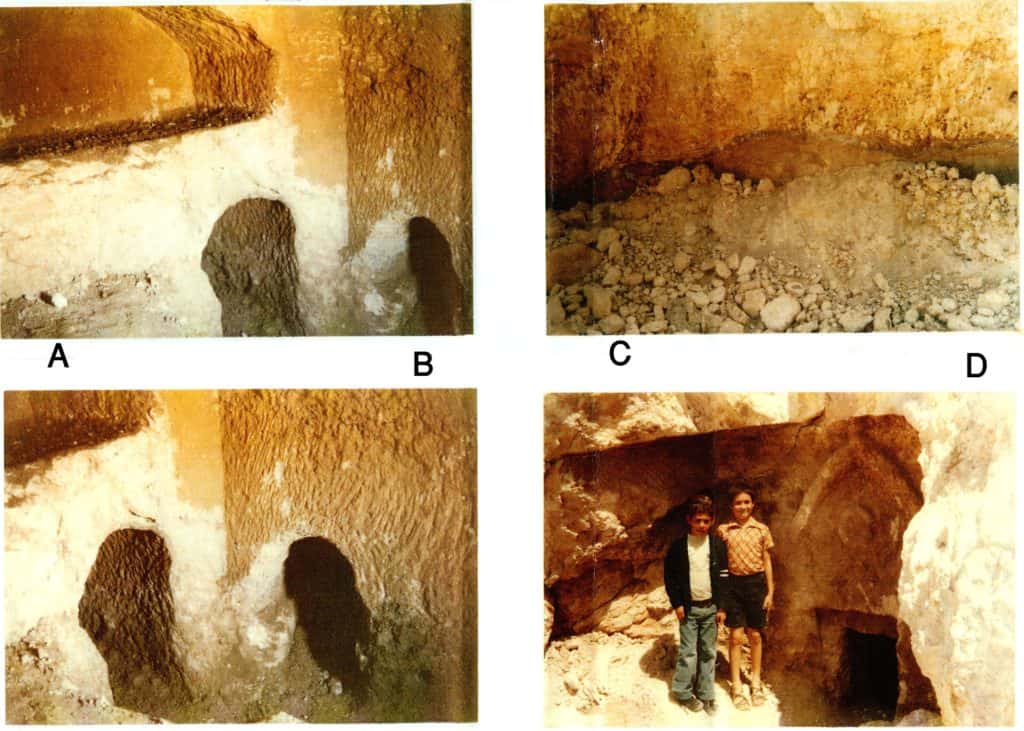
Not Enough Samples. Oded Golan, the owner of the James ossuary is quote in the NYTimes story saying the test sample was much too narrow–and suggesting that one would need to check at least 200-300 tombs to draw the conclusions Shimron has reached. Witherington, in contrast, mercifully reduces the number he thinks would be required:
You would have to do tests on say a 50 ossuaries from various places around Jerusalem and compare them to the ones in the Talpiot tomb before you could come to any sort of scientific conclusions of the sort that are made in this report. (e-mail, April 5, 2015)
In his blog post he echoes the same objection. Again, how Ben would know this I have no idea. Most of us are familiar with “random” sampling, as used in any number of ways in scientific tests. I immediately thought of the analysis of the Qumran cemetery, with up to 1100 graves, done by Joe Zias and others, based on the few dozen that have been “randomly” opened. In this case Shimron carried out tests on approximately 100 samples, three taken from each ossuary, taken from 15 tombs. He did not do only one test on an ossuary. He did not select the ossuaries, the IAA did that. And they were distributed throughout Jerusalem, but included all nine of the Talpiot Jesus tomb ossuaries (the 10th is missing) plus the James ossuary that Oded Golan was kind enough to make available. The results, according to Dr. Shimron, are definitive. I know him to be a very cautious man and he has, along the way, he has always raised sharp scientific questions on issues related to the Jesus tomb. He is willing to say publicly, putting his career on the line, “The evidence could not be stronger than what we have,” linking the James ossuary to the Talpiot tomb.”
Traditions on a Tomb of James. Witherington wonders about the traditions of a tomb of James in the Kidron Valley, and whether that would not preclude the James ossuary being placed in the Talpiot tomb.
If the James ossuary inscription is authentic and it comes from the Talpiot Jesus tomb, what about the late second century CE report by the Christian chronicler Hegesippus (quoted by Eusebius) who says the tomb of James was visible in the Kidron Valley, not far from the southwest corner of the Old City wall, where James was murdered? We suggest that there well might have been some kind of monument to James in that area but we know little of Hegesippus, who spent his career in Rome. We can’t assume that he is reporting any kind of eyewitness account. In Rome there are reports of tombs and monuments to both Peter and Paul in several locations. [6]See Graydon F. Snyder, Ante-Pacem, pp. 180-189. Monuments were assumed, over the ages, to be tombs, and tombs might not have monuments. The fourth century church historian Eusebius, for example, quotes an unknown writer named Gaius who says: “But I can show the trophies of the apostles. For if you will go to the Vatican or to the Ostian way, you will find the trophies of those who laid the foundations of this church.” [7]Eusebius, Church History 2. 25. 7. We are not certain if he means some kind of monument, pillar, or relic, or is he speaking of a tomb. Clement of Rome, who lived just a few decades after the deaths of Peter and Paul, mentions their martyrdom but seems to know little of any circumstances and mentions no tomb locations (1 Clement 5:3-7).
Today there are several monumental tombs in the Kidron Valley, dating to the late Hellenistic period (200-100 BCE) that are variously identified as the “Tomb of the Blessed Virgin Mary,” the “Tomb of Zechariah,” the “Pillar of Absolom,” and a tomb inscribed as that of a priestly family,that is sometimes identified as the “Tomb of James.” On Mount Zion today, the southwest hill of Jerusalem, millions of pilgrims visit what is called “the tomb of David,” though most scholars locate it further to the south, outside the city of David. No one takes any of these sites and locations seriously as historically connected to these figures. They are part of hagiographic traditions that Christians developed in the late Byzantine period down through the Crusades.
But even if there was an early tomb of James in the Kidron Valley that would not preclude his bones being moved or relocated, to the Jesus family tomb at some point in antiquity–perhaps before the conflagration in 66 CE, whereas the “monument” marking the spot of his death would have then been remembered and revered.
Even though I had initially suggested the possibility of the missing tenth ossuary being that of James, based on the similar dimensions and the patina fingerprints that seemed to place it in the Talpiot tomb, we must always adapt our views to new evidence. [8]Jacobovici and Pellegrino, The Jesus Family Tomb, pp. 175-192 and James Tabor, The Jesus Dynasty (paperback, 2007), pp. 319-331. Shimon Gibson had suggested this theory of a missing eleventh ossuary to us back in 2006, when he recalled that the ten ossuaries inside the niches, and removed to the Rockefeller, had been covered with soil.
Conclusion. This is a story that has been over 10 years in the making, with many complex strands (Talpiot tomb A and B; epigraphy, prosopography, statistics, DNA, and chemical tests) and its controversial nature will not simply disappear. If it were the tomb of any other 1st century Jew we would likely not even have an argument, but since millions believe that Jesus was raised from the dead in his physical body, which was then taken to heaven, theological issues come to play as well. And faith. Simcha was asked in the NBC interview above whether it took “faith” for him to be absolutely persuaded, particularly with this new evidence adding the James ossuary to the mix, that this was the tomb of Jesus and his family. His reply was interesting: Faith only comes into it if you want to believe that it is not.”
Several academics have already begun to suggest how the addition of the James ossuary to the names found in the Talpiot Jesus tomb would affect the probability statistics. You can read a preliminary analysis, “The James Ossuary at Talpiot,” by Kilty and Elliot on-line at Bibleinterp.com here. I encourage everyone to take a look at this article as it considers a wide range of related issues, beyond the new statistical calculations. They are convinced one goes from 48% to 92% probability–that this tomb can be identified with that of Jesus of Nazareth. We also now have the reworked calculations of statistician Jerry Lutgen, see here.
The final irony in all this is that folks like Ben Witherington face a real dilemma here. Ben absolutely accepts the high likelihood of the James ossuary–take alone–to Jesus of Nazareth–not just to “any Jesus” of the time. Statistician Camil Fuchs did some impressive work on this question that you can read in the Witherington/Shanks book, James the Brother of Jesus. But if you add this authentic James ossuary to a Talpiot Jesus tomb–the tomb further authenticates the James ossuary and gives it a provenance, while the James ossuary solidifies the identification of the “Jesus son of Joseph” of the tomb with the brother of Jesus. One supports the other, and normally that would be good news, but because of theological assumptions about Jesus’ physical body being taken to heaven–it just can’t be. It is like a man accused of murder, whose wife believes him to be innocent. The man has a rock solid alibi but he fears to tell his wife–or the court. At the time of the murder he was in bed with her best friend.
My own sense of things, having done historical work on both Jesus and James now over my 35 year career, is that to find them together in life and in death is an incredibly moving thing.







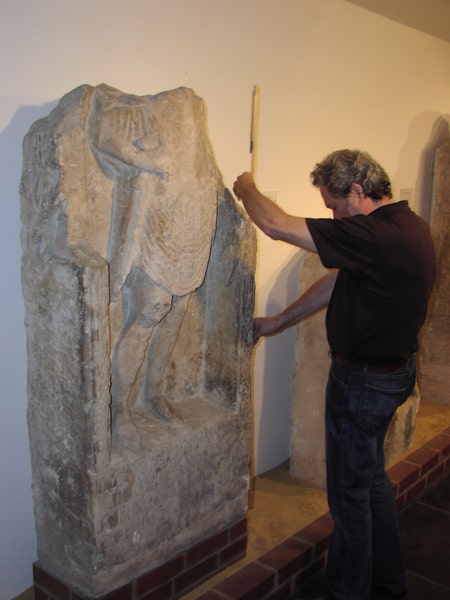
Comments are closed.